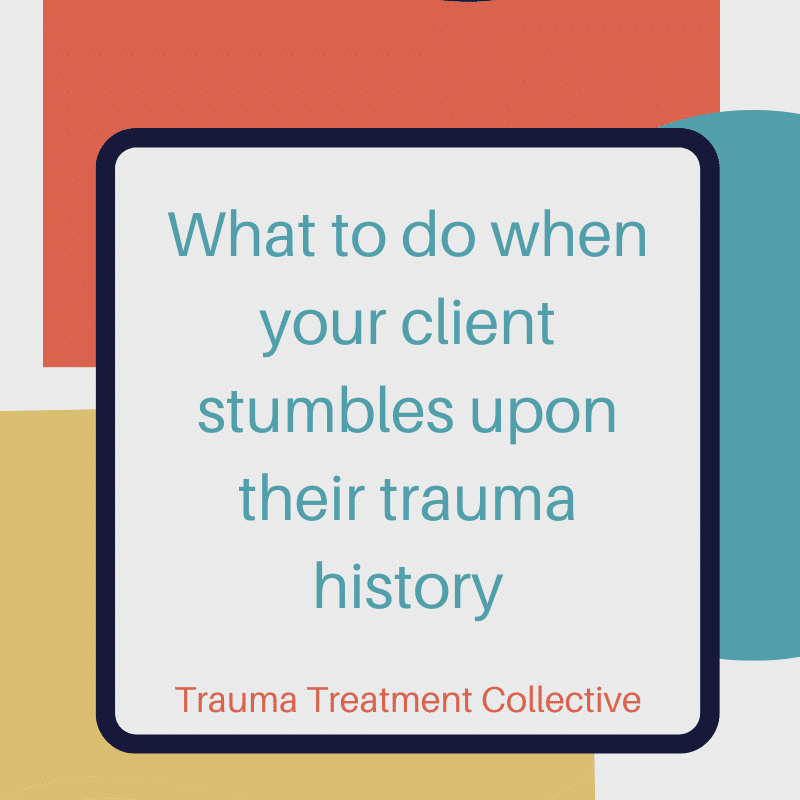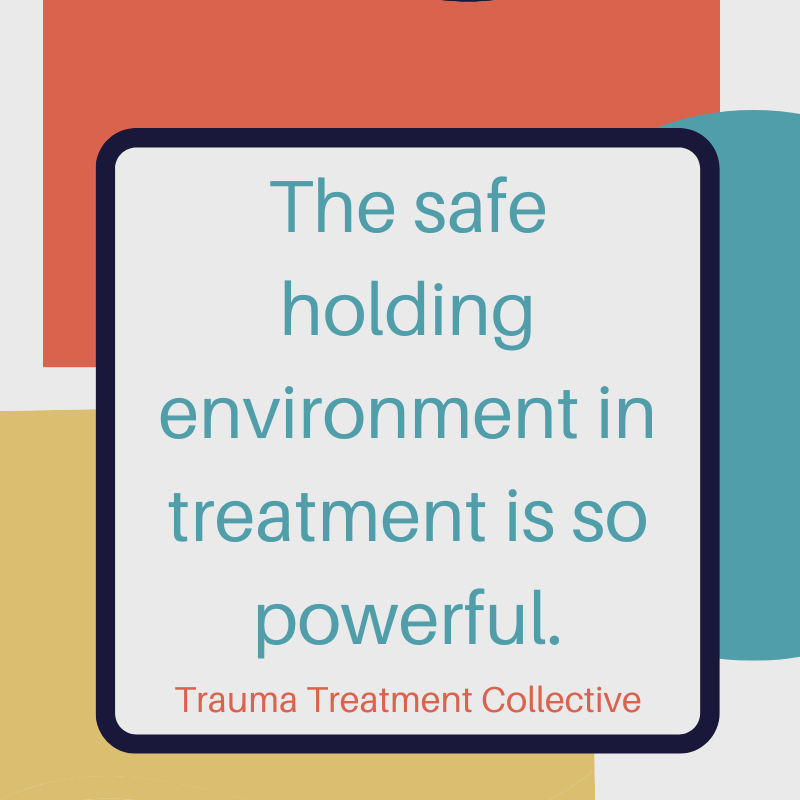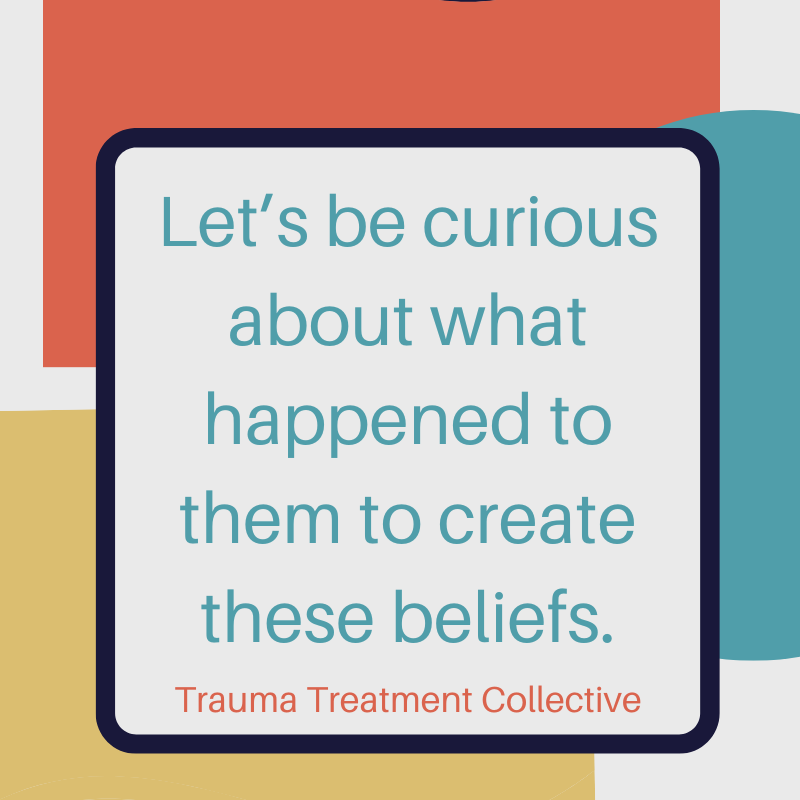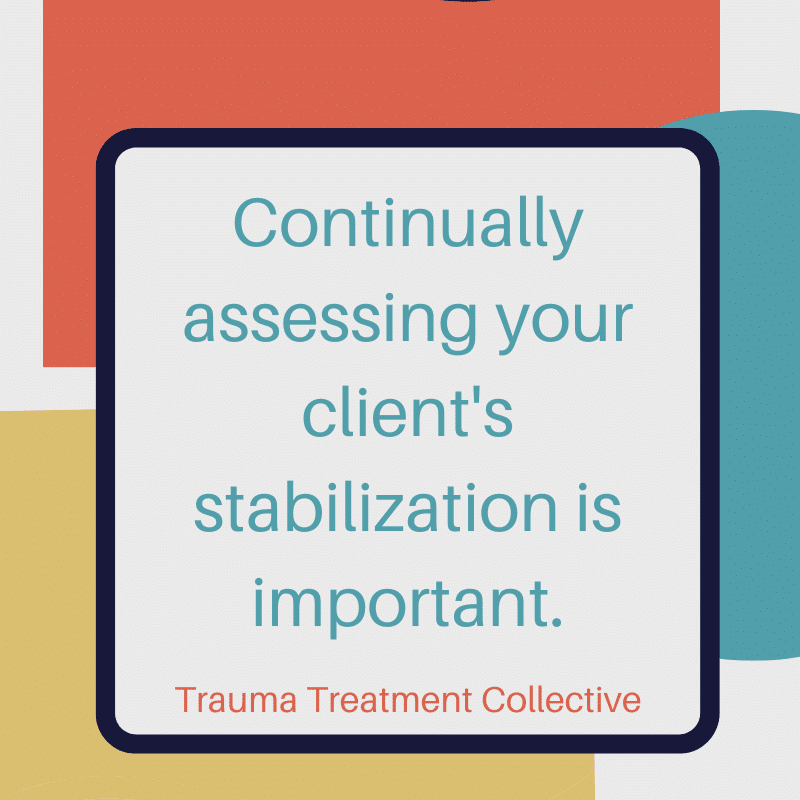
It is common for clients to come into treatment not knowing they have trauma. In fact, one of the questions I like to ask in the professional consults that we offer through Trauma Treatment Collective is, “what was the client’s initial goal for treatment?” I can’t tell you how many times I hear relationship issues, work stress, anxiety, or depression. While more and more people are talking about trauma and the impact of trauma in people’s lives thanks to things like the ACEs Study, some clients will discover with you that their mental health struggles are due to hard past experiences, also known as their trauma history. What do you do when you and your client stumble upon their trauma history that neither of you were aware existed?
About two years ago, I saw a social media post (I unfortunately can’t remember the author) that said something to the effect that the act of a person discovering that they survived trauma could be traumatic all by itself. I totally agree with this statement and want to encourage you to keep that in mind as you support your clients. For some clients, memories are tucked far away in the subconscious and for other clients, experiences are normalized and minimized to the point of having no effect on your client who has lived through the horrific experiences. In my experiences with clients, I have consistently found that these actual memories or feelings are tucked away or watered down due to a need to survive. When the time is right, helping them frame it that way can also be helpful and healing.

When clients come into the treatment process, the sense of safety, attunement, consistent positive interactions, and your curiosity as the treatment professional can create the exact environment that is needed for these traumatic experiences to be identified and eventually processed. This is one of the main reasons why trauma histories are uncovered and potentially identified as the root cause of a number of other mental health issues. The safe holding environment in treatment is so powerful. To learn more about creating a container, check out this vlog.
Sometimes I see the signs of unhealed trauma long before I assist my client in identifying their past experiences as trauma. Some of those signs might be boundary struggles. For example, some clients might have very rigid boundaries (which means nothing gets in or out) or other clients might have very leaky boundaries (meaning too much goes in and out). You might also see that your client doesn’t have a sense of their boundaries. They are wide open to everything and everybody. They may also express a lot of absolute thinking patterns, also known as black and white thinking. In this case, you may hear frequent absolute statements including phrases such as always, never, and every time. While there are many other symptoms of trauma, these two are very helpful in giving us a glimpse into the client’s worldview. Trauma has a tendency to impact a client’s way of seeing and experiencing the world. So when there is a skewed worldview, I am very curious about what happened to my client.

One of the ways I introduce this idea to a client is by sharing with them that most babies/fetuses don’t have skewed core beliefs about the world at conception. I encourage them to be curious about what happened to them to create these beliefs. I find this helps me introduce the idea of in-utero trauma as well as lived experiences that might have contributed. I am also able to make space for transgenerational trauma and talk about what might be living in our clients’ DNA.
But before any of these things are unpacked in the treatment process, I’ve learned it is important that I assess my client’s capacity to hold the revelation of their experiences as trauma. If they don’t have the capacity, the knowledge could be more detrimental than helpful. Many times it can open the door for intense emotions, which can feel overwhelming for the client. It can also create strain in important relationships if people are identified as perpetrators or connected to the trauma in a certain way. Additionally, it can shatter the constructs that clients have created to hold themselves together mentally. If we don’t manage the pace of things, it can feel like too much, too soon, and too fast, which is the very definition of trauma. There is a high risk of retraumatization if we are not mindful.

Pacing is the number one key in helping clients become aware of their trauma histories and the impact those experiences have had on them over time. Pacing is the ability to introduce pieces of information and experiences while also giving time for the client to digest and make sense of the information. Some clients will need you to slow them down while other clients will need you to speed them up. Continually assessing if a client is maintaining stabilization as they are being exposed to the reality of their experiences is important. If you want to learn more about pacing in trauma treatment, check out this vlog. Below I discuss some pacing techniques for uncovering a trauma history.
I really believe that as we walk our clients into more insight, slow is faster. Here are some ways to slow clients down as they gain more insight into their past:
- Hold on to the information until the client gains strong stabilization skills. It is okay for us, as the treatment professional, to “tuck some things in our back pockets” for later in the healing process.
- Assist the client in being curious about the “age” of the feeling, sensation, or image they are exploring as potential trauma. A great question is, “How old does __________ feel?” This can be helpful in helping clients give more context to an experience.
- Don’t be afraid to gently interrupt your client if they are flooding as they explore their history. Help them to pace themselves. I love to move the conversation to topics that bring joy to my clients to help them emotionally resource. I will sometimes directly say, “Okay, let’s take a break and give your system some rest. How was XYZ last week?”
These are just some suggestions you can experiment with. The overall goal is to help clients slow down and build capacity for self-regulation as they gain insight into the impact of their past on their present day life. We don’t want them to be overwhelmed by something that was already overwhelming for them, but rather we want to create an experience and space where they can heal.

